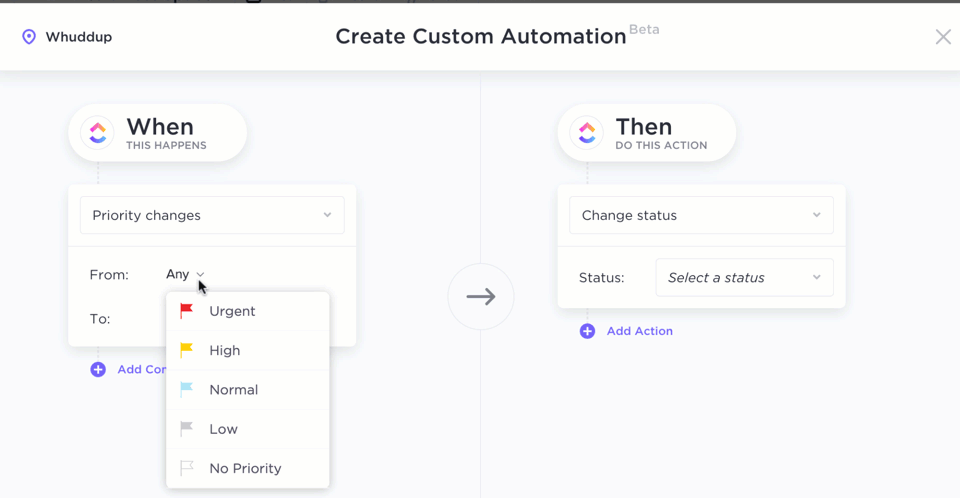How to Analyze Customer Feedback for Ultimate Success

Sorry, there were no results found for “”
Sorry, there were no results found for “”
Sorry, there were no results found for “”
How well do you know your customers? What if you could tap into their minds, uncovering what they love, what frustrates them, and what keeps them loyal?
Analyzing customer feedback gives you this power and transforms valuable insights into actionable strategies. It helps you understand your customers, amplify your brand reputation, and build stronger relationships.
Gathering and analyzing opinions allows you to drive real advancements and take control of customer satisfaction. But let’s be honest—sorting through all that feedback data is overwhelming.
What should you focus on? How do you turn raw data into meaningful actions? Let’s find out!
This guide will help you navigate these challenges and master the customer feedback analysis process. We’ll also explore the best practices for optimizing user insights.
Customer feedback analysis involves collecting, interpreting, and acting on valuable user insights. This systematic approach reveals your customer’s underlying sentiments, preferences, and problems, enabling you to make informed decisions.
But, to fully harness its potential, it’s imperative to recognize the difference between customer experience (CX) and customer satisfaction (CSAT) to analyze feedback data better and apply it effectively.
Balancing CX and CSAT is vital to promoting customer loyalty and business growth. Customer lifecycle management plays a crucial role in this process. It integrates customer feedback analysis methods well into each stage and lets you tailor your efforts to meet their needs.
For example, analyzing feedback in the customer advocacy stage helps you identify the most loyal users and turn them into brand ambassadors to attract new customers.
Curious about mastering these essential elements? The journey starts with recognizing the critical touchpoints of user interactions.
Touchpoints are the various stages where users engage with your brand—browsing your website, contacting customer support channels, or using your product. These moments offer invaluable data that transforms how you interact with them.
But to make the most of these touchpoints, you need a strategy—that’s where customer lifecycle marketing comes into play. Feedback analysis from these interactions helps you create a seamless, satisfying user journey.
Here’s how to identify and leverage these crucial touchpoints:
Sentiment analysis leverages natural language processing (NLP) to determine the emotional context behind user feedback. It categorizes feedback data as positive, negative, or neutral, giving you a quick snapshot of widespread opinion.
Here’s why sentiment analysis is a game-changer:
For example, suppose you run an online store. Your customers leave various types of feedback, such as:
Positive feedback: ‘I love the variety of products available!’
Negative feedback: ‘The checkout process is too slow and annoying!’
Neutral feedback: ‘The website is okay but could use some updates!’
Sentiment analysis allows you to understand customer feedback and pinpoint consequential issues. If many customers mention that the checkout process is slow, you know this is a critical area to address.
To resolve this issue, streamline the checkout process, optimize page load times, and simplify the user interface. After fixing these changes, you’ll see happier customers and a better shopping experience.
Eager to transform customer feedback into actionable insights? Let’s walk you through the essential steps.

Customer feedback analysis starts with robust data management facilitated by customer relationship management (CRM) software. These systems are crucial in organizing data to enrich customer experiences.
Enter ClickUp CRM—a robust customer feedback tool with many features to streamline feedback analysis. It unifies all user information—buying history, preferences, and communication—in a single database.
This holistic approach allows you to leverage data-driven decisions that upgrade your offerings and customer experience. Let’s discuss the essential steps to analyze customer feedback and harness ClickUp CRM’s capabilities.
The first step in analyzing customer feedback is gathering it all in a centralized and accessible location. This consolidation ensures you see the bigger picture, spot trends, and access quality feedback for analysis.
That’s where ClickUp CRM shines. This customer insight tool provides a 360-degree view, helping you better understand the user’s needs and behaviors. Here’s how ClickUp enhances the effectiveness of feedback collection:

With ClickUp Form Views, you can design and distribute customizable customer feedback surveys. Share these forms via email, embed them on your website, or post them on social media. This feature helps you standardize the collection process, ensuring you gather consistent data.
Customer satisfaction surveys are very effective for compiling structured feedback data and ensuring high response rates. Whether you need product reviews, service satisfaction ratings, or improvement suggestions, customized feedback form templates ensure you get the insightful data you need.
Use the ClickUp Feedback Form Template to gather customer feedback.This customizable digital form allows for quicker data collection, a centralized location for feedback, and an organized system for analysis.
ClickUp is an excellent customer success software that integrates various communication channels, including email, social media, and direct customer interactions. It allows you to accumulate feedback in one place, ensuring easy access to all valuable data points.
💡 Pro Tip: Use ClickUp Automations to streamline feedback collection in your CRM. It automates issue handoffs, updates customer statuses based on their feedback, and alerts your team about critical accounts needing immediate attention.

Once you’ve collected all the data in a centralized location, the next crucial step is categorizing customer feedback. This process involves sorting it into themes or topics to identify patterns and focus efforts where they will drive the most improvement.
Here’s how to categorize customer feedback:
Define broad classifications like product features, customer service, and website usability. Within these, create subcategories for more specific issues
Use ClickUp Tags to label each piece of feedback, making it easy to sort and filter. For example, tag feedback about slow checkout as ‘checkout process’ and ‘speed issue’

Set up automation to tag feedback based on keywords. For example, automatically mark feedback containing words like ‘slow’ or ‘time’ with ‘speed issue’
The third step is crucial for uncovering the fundamental reasons behind customer feedback issues. This problem-solving approach helps enforce targeted solutions that address core problems and enhance customer experience. Here’s how to approach it:
One of the first steps in root cause analysis is identifying the common themes or recurring problems in the categorized data. It provides a thorough overview of user sentiments, focusing on systemic issues that impact your customer management strategies.
It’s a structured approach to uncovering root causes by asking ‘why’ more than five times. This method helps move beyond surface-level problems to identify issues that need resolution.
For example, if customers express dissatisfaction with website navigation, repeatedly asking ‘why’ might reveal deeper issues such as a confusing layout, insufficient user guidance, or technical glitches.
Use ClickUp’s 5 Whys Template to diagnose and highlight each sub-problem of more significant issues. This feedback analysis template enables color coding, note-taking as comments, and team collaboration.

Use ClickUp Dashboards to analyze key metrics like customer lifetime value, average deal sizes, and more. These performance dashboards feature over 50 customizable widgets, allowing you to create high-level visualizations and real-time insights into customer data.
💡 Pro Tip: Harness ClickUp Brain to extract actionable insights from quantitative data. Its AI capabilities allow instant data searches across all dashboards, enabling quick identification of trends, potential reasons for churn, and opportunities for improvement.
This process involves identifying and interpreting routines or themes in qualitative customer feedback data. It helps uncover overarching trends and insights beyond individual issues, providing a deeper understanding of user perceptions. Here’s how to approach it:
Set certain codes to segments of feedback that address similar problems or express common sentiments
Explore connections between themes to understand their impact on customer experience
Compile the identified themes and sub-themes into a cohesive narrative highlighting key insights
Connect these findings to the root causes identified earlier to provide a broad view of customer feedback dynamics
After unearthing key insights from customer feedback, the next critical step is presenting these findings to catalyze action. Here’s how to proceed:
Summarize the most impactful insights from feedback analysis using concise language. Avoid jargon to ensure understanding across all teams
Customize presentations for different audiences, highlighting how identified themes align with organizational goals and customer expectations. Emphasize actionable insights relevant to each stakeholder group
Use ClickUp Whiteboards to create visual presentations that showcase findings and promote team discussions. Features like live cursors, actionable tasks, and embedded content boost collaboration

Use ClickUp Docs to record detailed action plans derived from customer feedback. Create structured documents that outline specific steps, responsibilities, and timelines for executing organizational changes

Customer feedback analysis employs quantitative and qualitative feedback research methods to gain valuable insights.
The qualitative method offers a deeper understanding of the reasons behind customer feedback. Analyzing quantitative data allows you to track trends, calculate metrics like Net Promoter Score (NPS), and identify areas for improvement.
NPS, or ‘Net Promoter Score,’ is a widely used metric that assesses customer advocacy and satisfaction. It revolves around a single question: ‘How likely are you to recommend our product/service to a friend?’
Respondents answer on a scale from 0 to 10, with those scoring 9-10 categorized as promoters, 7-8 as passives, and 0-6 as detractors.
But how do you calculate this score? Subtract the percentage of detractors from the percentage of promoters.
In other words, NPS = (No. of promoters – No. of detractors)/ Total no. of respondents
Using NPS in customer feedback analysis enables you to:
Integrate NPS into your feedback analysis framework to foster customer-centric strategies, boost customer retention, and drive sustainable growth.
ML (machine learning) and AI (artificial intelligence) automate data collection, processing, and examination tasks, reducing the need to analyze customer feedback manually. These technologies process large volumes of data, providing real-time insights into customer feedback.
Check out these impressive benefits of using AI and ML in feedback analysis:
Leveraging ML and AI in feedback analysis allows you to streamline operations, augment decision-making agility, and deliver personalized customer experiences.
Due to their real-time nature and widespread usage, social media platforms are valuable sources of insightful data. Customers share their unfiltered opinions, providing authentic feedback that reflects their true sentiments.
Observe these interactions to gain visibility into customer perceptions and issues as they unfold:
It ensures you stay attuned to customer insights and preferences using social media. Use this approach to promote meaningful customer relationships and business growth.
Feedback analysis goes beyond data collection. It’s about translating insights into actionable strategies that drive organizational excellence. Here’s how to manage customer feedback to deliver tangible outcomes:
Use insights from feedback analysis to deepen customer relationships. Tailor your communication and strategies to deliver personalized experiences. Ensure they resonate with your audience’s preferences and address their pain points.
Example: USAA uses customer feedback combined with AI to proactively provide personalized services during significant life events, enhancing customer engagement through timely and relevant support.
Apply actionable insights based on customer feedback to optimize products, refine service delivery, and streamline processes. Addressing concerns improves satisfaction levels and encourages long-term commitment.
Example: Amazon exemplifies this by requesting feedback with every order, allowing them to address issues and continuously improve the customer experience quickly.
Customer feedback analysis shows how your brand is perceived in the market. Use these insights to strengthen your brand reputation by aligning your offerings with user expectations.
Example: Sun-Maid, one of the largest raisin and dried fruit processors in the world, utilized customer feedback during its rebranding process to discover gaps and opportunities. They then effectively aligned their brand with current customer expectations and enhanced their market perception.
Use data-driven insights from the feedback analysis process to make informed strategic decisions. Identify emerging market trends, predict customer needs, and optimize strategies. Ensure they align with customer expectations and boost operational efficiency.
Example: Netflix uses customer ratings to drive personalization, effectively using feedback to tailor content recommendations, which meets customer preferences and enhances viewing satisfaction and retention.
Customer feedback analysis presents many challenges you must address to gain actionable insights. Here are some of the most prominent ones:
Ensuring the reliability and relevance of data is crucial. Inconsistent feedback collection methods and data silos skew results and render non-insightful data. You need robust data management practices to mitigate these challenges.
While AI and ML technologies automate customer feedback analysis, they may struggle with nuanced aspects of human feedback.
Challenges such as handling unstructured data from sources like social media comments and understanding cultural contexts impact the reliability of insights.
Don’t rely too much on an automated customer feedback analysis tool without human validation. It may lead to misinterpretations and missed opportunities for deeper insights. To derive accurate feedback data, achieve a balance between automation and manual analysis.
Collecting customer feedback raises notable privacy concerns under stringent regulations like GDPR. To promote trust and positive relationships, ensure compliance and ethical use of data.
To address these challenges, take a comprehensive approach to analyzing customer feedback. Blend advanced technology and human expertise to drive innovation and elevate satisfaction.
Customer feedback analysis is the cornerstone of business success. It provides crucial insights that drive progress and optimize fulfillment. Listen to your customers to gain valuable perspectives and deliver personalized experiences.
ClickUp simplifies the feedback analysis process with its integrated CRM solutions. It helps you collect customer feedback, centralize it, and automate feedback analysis processes.
Ready to transform feedback into a strategic advantage? Start with ClickUp today to gain actionable insights that drive operational excellence.
© 2025 ClickUp